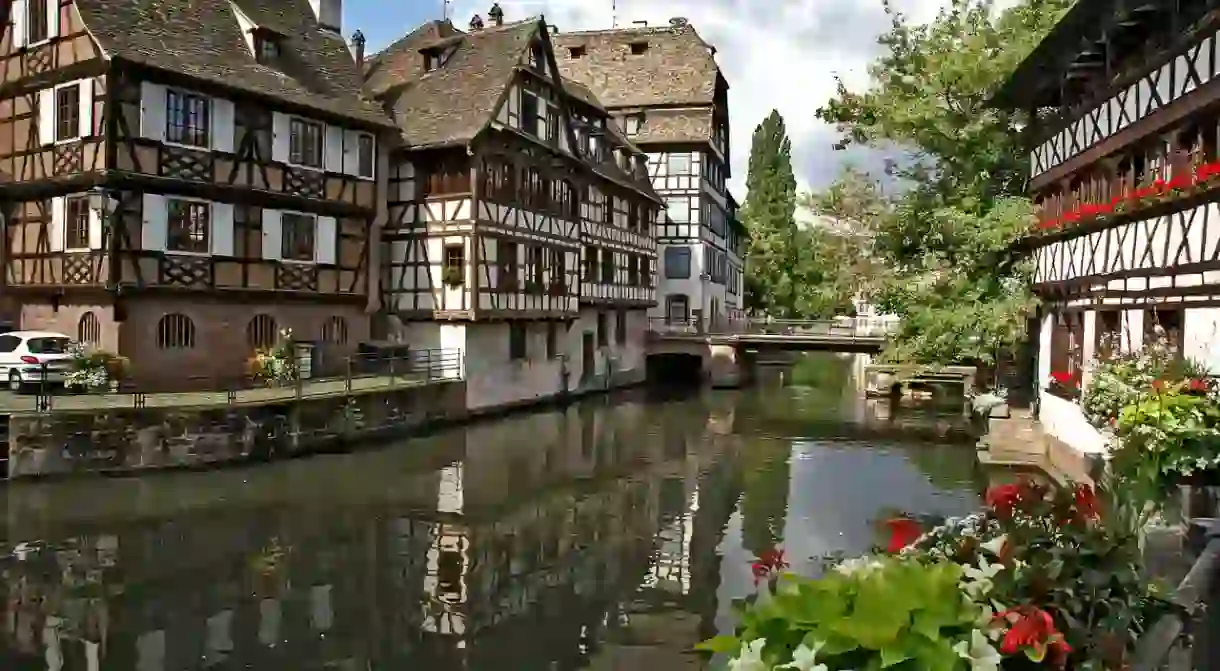Why the Alsace Region Changed Nationality Four Times in a Century

Imagine if you changed nationality just because the land of the house you were living in switched countries? On one border in Europe, there are small villages where, overnight, people who had been one nationality were forced to technically become another, without ever leaving their homes.
Did you know – Culture Trip now does bookable, small-group trips? Pick from authentic, immersive Epic Trips, compact and action-packed Mini Trips and sparkling, expansive Sailing Trips.
The border between France and Germany
France shares a border with many countries including Switzerland, Monaco, Belgium, Spain and Italy, but this story is concerned with the border to the east, that neighbours Germany. It’s a particularly hilly part of Europe, with a strip of small mountains running from north to south called Les Vosges. This small mountain range is the border between France and Germany, and it is where you can find a number of villages and the picturesque city of Strasbourg. Welcome to the region of Alsace.

The River Rhine is the physical border
The River Rhine is the longest river in Europe and, because it travels through so much of the continent’s land, it was a natural way of separating one country from another. As the Rhine meanders from its source in the Swiss mountains, it physically demarcates the border between Germany and Switzerland, as well as the border between Germany and France. Just north of Strasbourg, the Rhine veers west through Germany and heads into the Netherlands before heading out to sea.

The actual border has changed countries…
The region called Alsace has changed hands between France and Germany a number of times throughout the past centuries. King Louis XIV first established French sovereignty over the region after the Franco-Dutch war of 1674 and it remained French for over 200 years. After France’s defeat in the Franco-Prussian war, the region was annexed by Germany in 1871 and stayed in German hands until 1914. The Vosges mountains were fought over by both countries during World War I – the summit, once called Hartmannswillerkopf (now Le Vieil Armand), changed hands eight times during 1914 alone and around 30,000 soldiers of both nationalities lost their lives here during the war.
In 1922, France reclaimed the region from a broken Germany along with many villages and its capital city, Strasbourg. However, the Nazis took the city back during World War II and tried to de-Frenchify it by removing statues of famous French people and banning berets. At the end of World War II, Alsace switched back to France and has been French ever since. The people restored their monuments, tried to reduce the amount of German spoken in school and put up public signs saying ‘It is chic to be French’.

… and French and German communities exist on both sides
Culturally speaking, the border between France and Germany has always been fluid. There are some communities who regard themselves as more German than French over the last couple of centuries, despite being on the western, more ‘French’ side of the Rhine. It’s also undoubtedly true that many communities consider themselves to be more French than German – during the rise of German nationalism at the start of the 20th century, the people living in this mountainous area were able to keep their distance from the tyranny and remain French, while also preserving their regional identity.
The region is the best of both
The whole area of Alsace has always seen itself as stuck in the middle of both countries. It’s considered too German to be French and too French to be German. Having remained French for the past 73 years, it seems unlikely to change and the region now celebrates its German influences in its cuisine and architecture and tourists flock to see the traditional culture and German Christmas markets. In this way, the residents of Alsace are very similar to people who live in other border areas around the world who have learnt to live with, and indeed love, the way that their towns celebrate dual nationalities. One such place is Baarle, a town that simultaneously shares a border with Belgium and the Netherlands.













